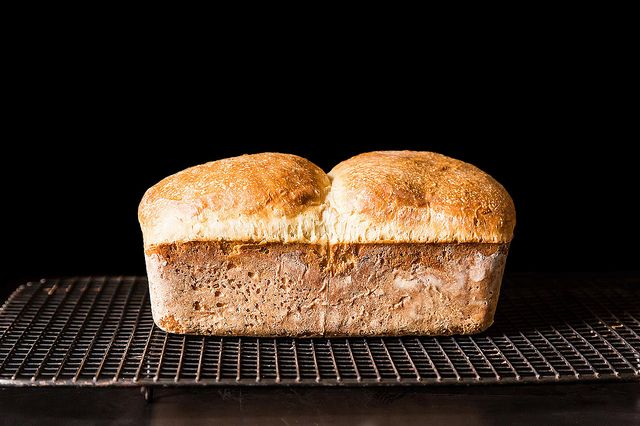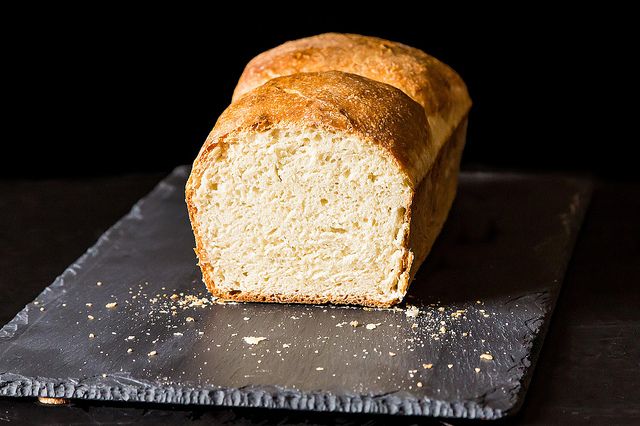
On our new weekly podcast, two friends separated by the Atlantic take questions and compare notes on everything from charcuterie trends to scone etiquette.
Listen NowPopular on Food52
Continue After Advertisement
13 Comments
Jesam1ne
August 16, 2022
1860 immigration of Indians to Natal introduced the bunny chow. Apartheid started in 1948. South Africa got independence from England in 1964. It was a way for labourers to carry food. Europe and South America have their own versions with stews and soups 😁
Sarah D.
July 27, 2013
Great post. I grew up in Durban eating bunnies, and I can say from experience that getting a good bunny chow outside of Durban, even in other SA cities is not easy. One point of correction though; if the bread breaks the curry should spill onto you lap, not a plate. Eating a bunny chow off a plate is very bad form!
happybelly
July 26, 2013
Bunny Chow was not only available at "Bunny Chow Joints". It was/is a common form of lunch for many poor laborers as it is cheap and no utensils are needed. They would buy a half loaf of bread (which in SA is much sturdier than in the States) and a can of sardines in tomato sauce, or a can of curried fish (a very traditional South African staple), with cans supplied with a wind open device. The bread is hollowed out by hand and the seafood of choice dumped in, providing a very filling meal for very little money. Here it truly was a case of necessity being the mother of invention.
dymnyno
July 26, 2013
I like the sound of this recipe but wish you had included more "instructive" pictures. Regarding the knives...right up there with my husband using my favorite knives for opening boxes. Your pic does make a nice contrast of the soft loaf of bread and the hard grey slate which is a success.
Panfusine
July 26, 2013
Been fortunate to eat Bunny Chow at one of the original Bunny Chow joints when I lived in South Africa, Given up trying to replicate the original flavor of the vegetarian version curry (which I remember was particularly redolent of Cinnamon), but I still serve up loaves (or even scooped out sourdough loaves) at home with lentil & veggie versions.
AntoniaJames
July 26, 2013
Panfusine, so happy to see you here! I'm sure your vegetarian Bunny Chow is delicious, whether or not it perfectly replicates the stuff served up in the Bunny Chow joints your frequented. ;o)
susan G.
July 27, 2013
Panfusine, you are too modest. Here is her recipe, and 3 others on the site. http://food52.com/recipes/search?q=bunny+chow
AntoniaJames
July 26, 2013
This is so interesting -- and I plan to forward the piece to family and friends with ties to South Africa -- but that photo of a loaf of bread, just cut, on a stone slab, makes me feel terribly sorry for your knives. Ouch. Can this be chalked up to a rookie error in food styling, or am I unduly concerned about running a knife blade across stone? ;o) P.S. Either way, the FOOD52 photo studio would do well to find a well-worn crumb box -- or perhaps offer a gorgeous artisanal one in the Provisions Shop -- to kick its bread photos up a notch. Just saying.
MrsMehitabel
July 26, 2013
Antonia, I'm married to a knife maker, and that does kind of set my teeth on edge as well. But maybe whoever it was made sure to be very careful when the blade was mostly through- perhaps they even picked up the loaf a bit for the last part of the cut! I'm pretty sure that's what happened. ;)
AntoniaJames
July 26, 2013
Alas, on a site that has as a primary purpose the sharing of useful knowledge, especially to less experienced cooks, the example set is regrettable, indeed. ;o)
Kristen M.
July 26, 2013
As MrsMehitabel correctly suggested, we were careful not to slice the knife into the slate -- no knives were harmed! As home cooks, food professionals, and stylists, we adapt to the equipment at hand -- and slice carefully on any presentation board (for the sake of both the board and the knives).
Your point has been taken -- this wasn't intended as an instructional post on knife care and I hope that this doesn't overshadow Madeline Grimes' great article.
Your point has been taken -- this wasn't intended as an instructional post on knife care and I hope that this doesn't overshadow Madeline Grimes' great article.
Ed R.
July 26, 2013
What, all that colorful history and description, then just a picture of the bread loaf? Pretty lame for the Food52 blogs I've come to enjoy. C'mon, man.
Sarah J.
July 26, 2013
I loved reading this piece! At first, I thought bunny chow would be like puppy chow (http://en.wikipedia.org/wiki/Puppy_chow, but carrot-flavored.
Is there anywhere outside of South Africa that you can get Bunny Chow?
Is there anywhere outside of South Africa that you can get Bunny Chow?



See what other Food52 readers are saying.